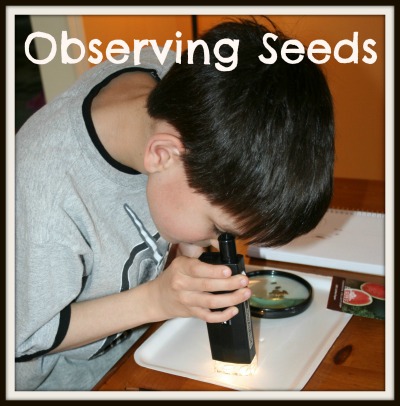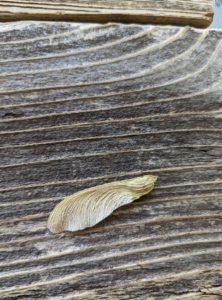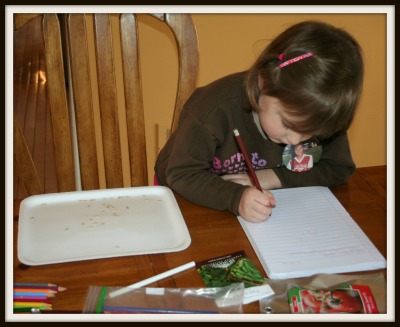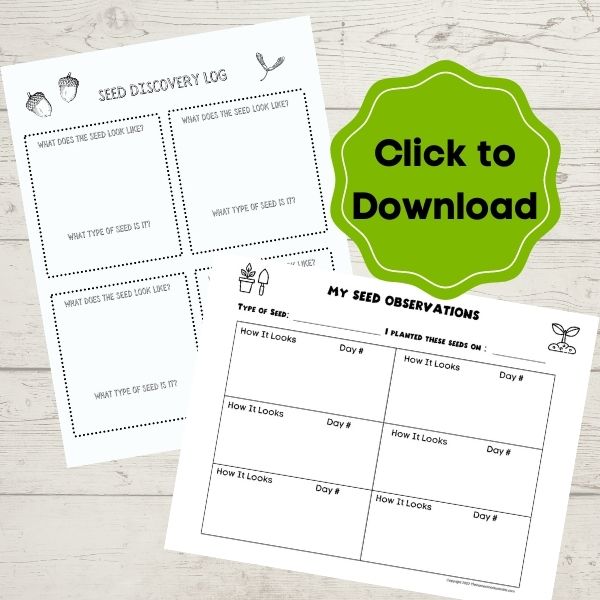Observing Seeds
While most of us think about seeds in the springtime, autumn can be a great time to revisit the topic, investigate and observe leftover seeds from gardening packets, plant a winter windowsill garden, and make fun crafts with scavenged seeds picked up on nature hikes. The next time you need a quiet educational activity for your kids on a cool or rainy fall day, try pulling out their science notebooks and asking them to make scientific observations about different types of seeds.
Try this simple observation that can be easily adapted for different ages.

First, collect several different types of seeds. You could go for a nature walk and pick up maple seeds, acorns, and other seeds that have fallen from trees and plants to be incorporated into the leaf littler in preparation for the following spring. Or, you could simply grab a few of your leftover seed packets from spring planting.
Here is a maple seed we gathered in April.




Have them sort {classify} their seeds into like groups, label the groups, and then look carefully at one of each type. Have your children draw what their seeds look like, and then write a description under their drawing. Then, have them write what it feels like, smells like, sounds like, and tastes like. {If you found your seeds outside, you can skip the tasting.}
Ask them to repeat this for each type of seed they have. Finally, have them compare the seeds by writing a few descriptive sentences like:
The watermelon seeds are bigger than the cucumber seeds.
Acorns have tougher shells than maple seeds, but maple seeds move through the air like helicopters.
For added fun, your kids can glue samples of the seeds into their notebooks next to their drawings. For those of you that want to try this activity, but don’t keep science or nature journals, I’ve created a simple printable for you. Click on the image below to download it.
Next, gather various seeds from the garden section of a store, soil, water, and planting container. Plant various seeds, place them in a warm spot, water carefully (don’t over water), and observe what happens.
Use the observation sheet below to track the progress of each seed. Click on the graphic to open the PDF.
Colleen is a wife, homeschooling mama of four, blogger, and author. She is passionate about family and hands-on education, and loves to learn alongside her children as they experiment, explore, and play in their world each day. Visit her at Raising Lifelong Learners where she chronicles the adventures {and messes} involved when homeschooling gifted children with sensory difficulties. You can learn more about her books, including her latest Free Resources for Elementary Teachers, on her website.
I hold a master’s degree in child development and early education and am working on a post-baccalaureate in biology. I spent 15 years working for a biotechnology company developing IT systems in DNA testing laboratories across the US. I taught K4 in a private school, homeschooled my children, and have taught on the mission field in southern Asia. For 4 years, I served on our state’s FIRST Lego League tournament Board and served as the Judging Director. I own thehomeschoolscientist and also write a regular science column for Homeschooling Today Magazine. You’ll also find my writings on the CTCMath blog. Through this site, I have authored over 50 math and science resources.



